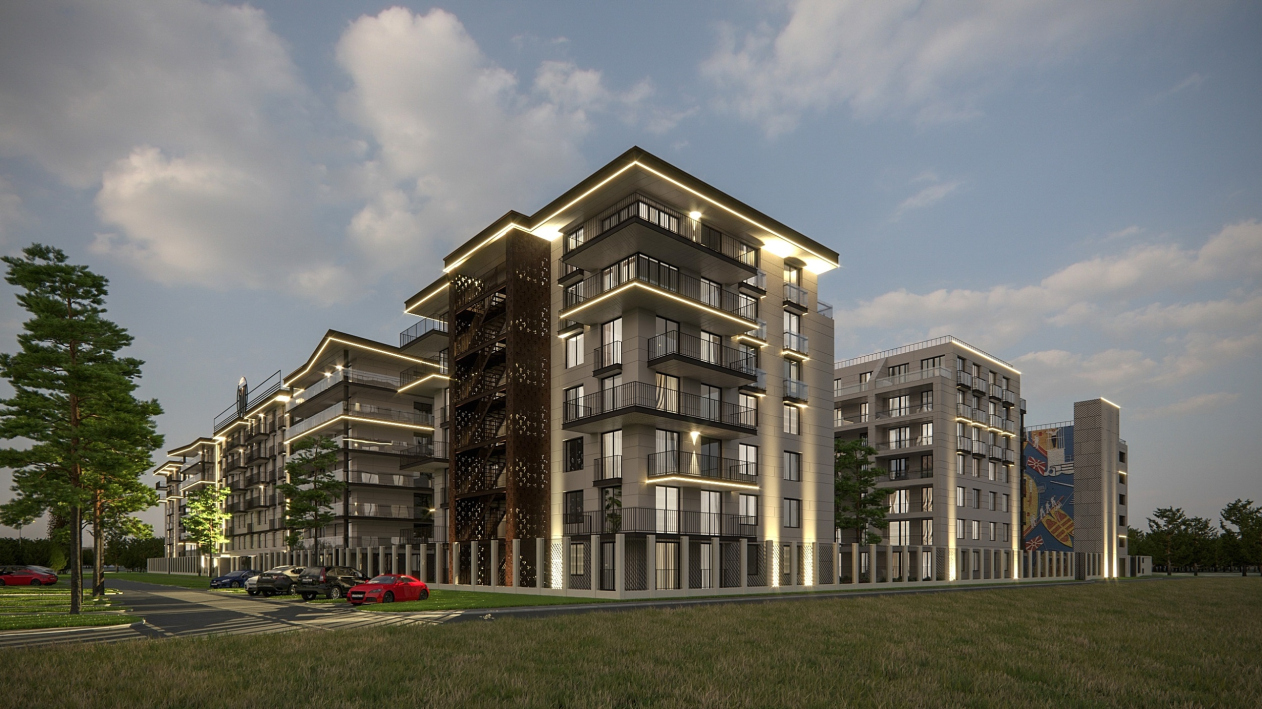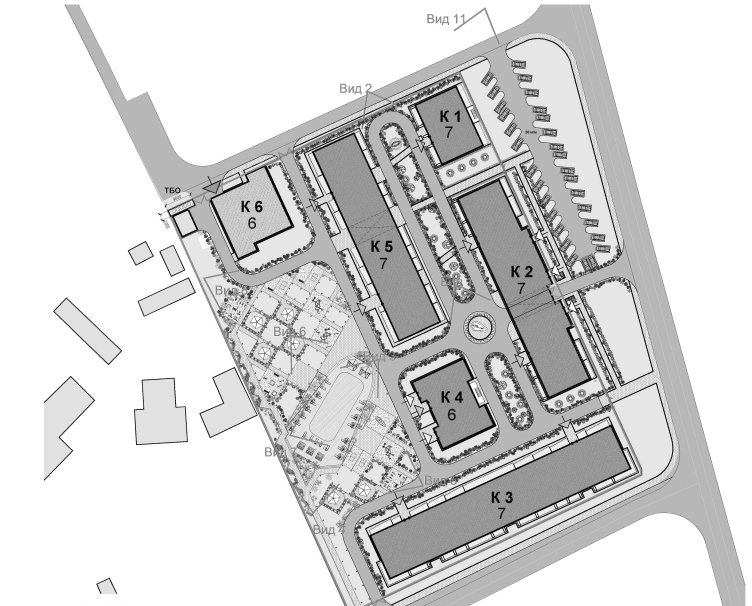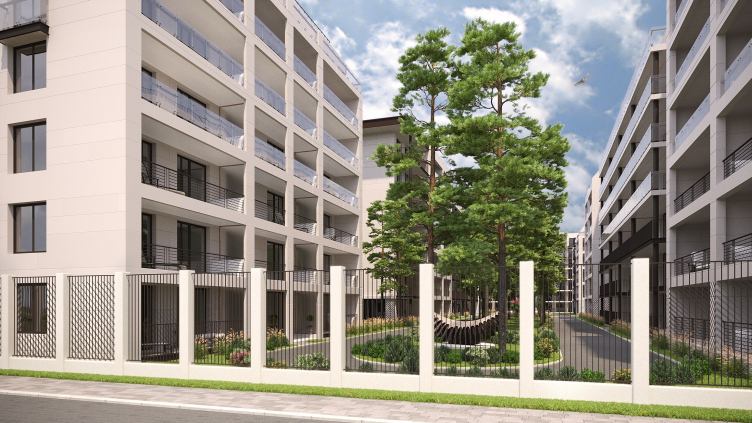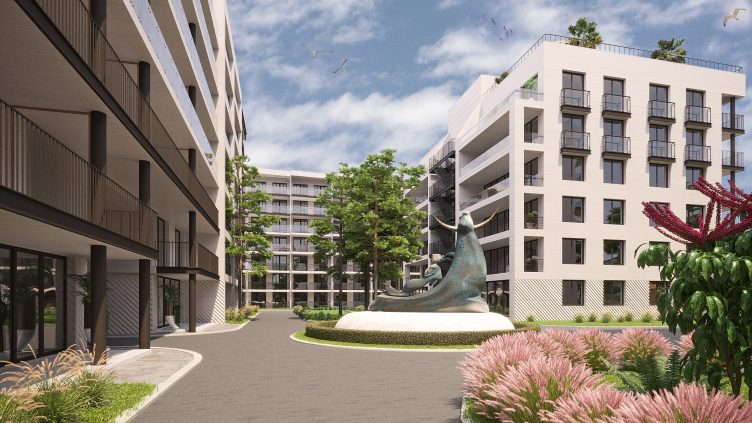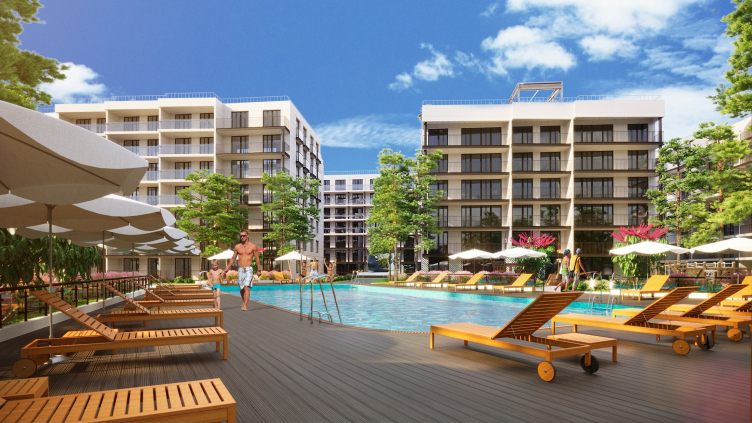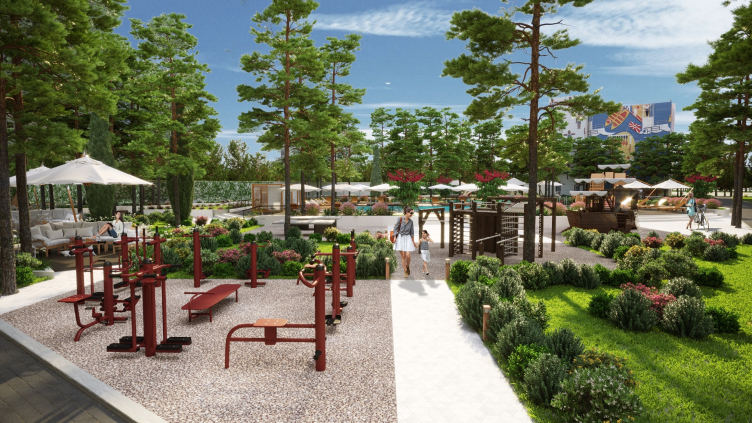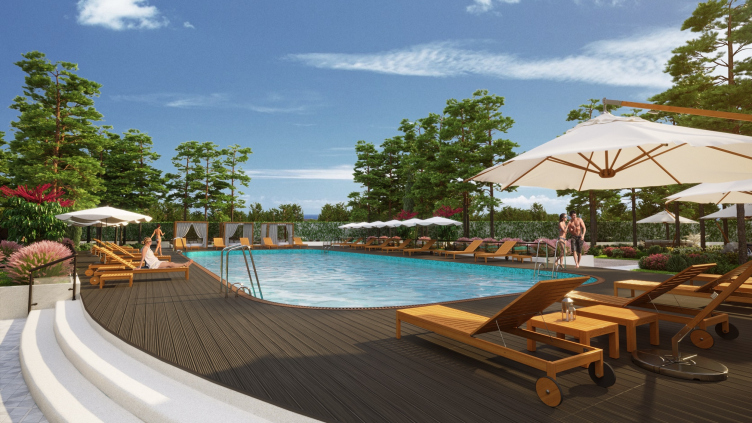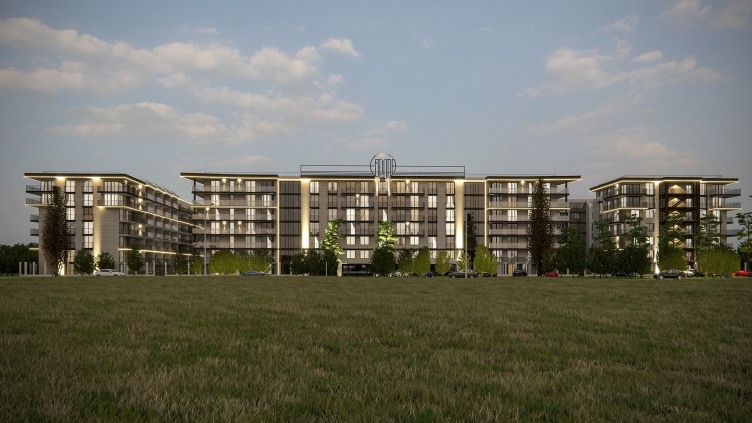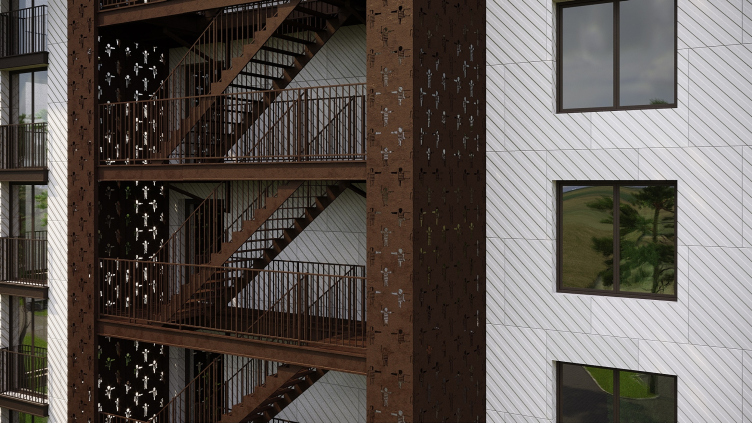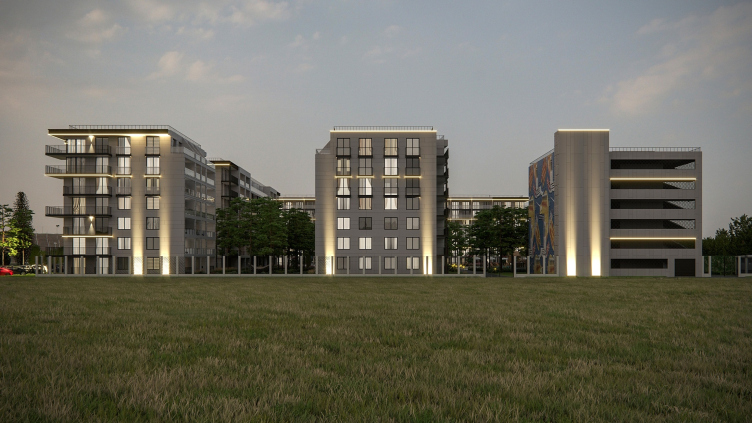The apartment hotel “Europe” is being built near the Chemburkskoe lake on the Simferopol highway. It stands on the second line, a small distance away from the lake shore. From the complex, the beach can be accessed by a quiet lane of paving stones. The construction site has a regular rectangular shape – it is the territory of the former children’s summer camp “Timurovets”. Every Russian remembers, of course, the legendary Arcady Gaidar story “Timur and His Squad” about a boy who secretly helped those who needed help, fought his antagonist Kvakin and saves Zhenya girl. Many a “young pioneer detachment” was named after this literary character.
“Europe” apartment hotel © Mezonproect
“Europe” apartment hotel © Mezonproect
“Anapa presents a rather mottled architectural context: seaside resort architecture, Soviet construction, and the heritage of the chaotic 1990’s. This is why our hotel stands out with its pristine European appearance – says the cofounder of “Mezonproect” Ilia Mashkov – At the same time, we tried to be respectful of the memory of the place, and enrich our idea with a few characteristic techniques of the past, which ultimately goes a long way to create identity of the architectural ensemble”. Indeed, it would have been a waste to let such identity go unused, and, getting ahead of the story, I will say that it got reflected in the art concept of the project.
“Europe” apartment hotel © Mezonproect
“Europe” apartment hotel © Mezonproect
On the territory of Timurovets, there are a lot of valuable trees, some of which are no less than fifty years old. The main challenge for the architects was to preserve as many trees as possible because they create a healthy atmosphere, absorb noise and dust, serve as windbreakers, and give shade and coolness in the hot climate. The complex is designed as a mini city block with a closed-door central part. This way, the architects are minimizing the road noise coming from the highway. The yard-side driveways are situated in such a way so as not to compromise the trees. A few of the older pine trees had to be replanted. “It must be said that the client appreciated our idea of preserving the trees. It’s great when the client trusts the architect. The architect sees the future, and the client’s trust increases the project’s odds for being a success” – Ilia Mashkov says.
The buildings stand rather close to one another, three lines with two yards, but then again, it does not seem cramped because of the small number of floors. The first and second lines are separated by a small green yard with a sculpture loosely based on Rembrandt’s “The Abduction of Europa”. There is also a nicely decorated recreational yard with a swimming pool situated in the depth of the complex – essentially, it is a place of recreation on the way to the sea.
“Europe” apartment hotel © Mezonproect
“Europe” apartment hotel © Mezonproect
“Europe” apartment hotel © Mezonproect
The front line composition of Europe apartment hotel faces the Simferopol Highway, and is designed to be perceived from the window of a driving car. The pristine integrity is created by a line of cornices that stand out and are accentuated by color. I would say that this is a visual demonstration of the harmony that we achieved inside of the complex – Ilia Mashkov says.
On the whole, color-wise and plastique-wise, the architecture is close to the Scandinavian residential houses with terraces windows down to the floor, and glass fences (Northern Europeans like meditating on their terraces and never clutter them with household junk but, on the contrary, use them as a means of self-presentation with the help of designer furniture and decorative plants). At the same time, the composition of the main façade displays some features of the classic symmetric unity of three parts: the main building with two projections plus two “wings” on the sides. A casual observer may think that the three buildings, which face the red line, are actually parts of one and the same building with a sophisticated system of inside yards. And a pompous and grand building it is, too! In actuality, the composition is still more sophisticated, and, as was already said, this sophistication was dictated by the necessity to save the trees and by the insolation standards as well.
“Europe” apartment hotel © Mezonproect
The emergency staircase made from corten steel makes the complex truly unique. This staircase is an active element of the main façade: it attracts people’s attention thanks to its pattern and noble texture. “One must be aware that the self-costs in Anapa are pretty low, on the verge of strict economy – Ilia Mashkov notes – It is planned that the staircase will be executed from expanded oxidized steel. This noble material requires that things that are near it also be of high quality; it must neighbor on a perfect surface. If it’s going to be the standard rank-and-file ceramic tiles with the joints that you would expect to see, then it would be the natural thing to do to replace the brutal corten with ceramics as well. So far, we are in the process of choosing and approving the materials. We will also make sure that our tiles are textured and that they have a size that’s different from the standard”.
“Europe” apartment hotel © Mezonproect
Yet another important aspect was keeping a fair bit of the Soviet identity. Out of it, the architects chose the most touching and romantic things. The blind wall of the parking lot is turned into the yard, which is done in order to protect it from the exhaust fumes. The wall is decorated with a panel that displays a picture of seamen, ships and boats – it becomes one of the main accents and evokes associations with the soviet monumental art. It also looks like a vintage artifact from the past like a reminder of the Soviet young pioneer camp.
“Europe” apartment hotel © Mezonproect
In spite of its Scandinavian appearance, the complex has a lot of elements of southern architecture in it. The deep recessed balconies and open terraces, ledgy balconies and French windows with fences made of glass and metal – all of these come together to form the necessary prerequisites for the Italian supper in the open air, and goes a long way to diversify the plastique of the façades. And, if we are to speak about the southern Russian cities, which today, instead of vernacular architecture, demonstrate an odd mix of different epochs and styles, the architecture of “Europe” apartment hotel – seven-story city block with green yards, gardens on the roof, and other joys of south – could become a model example for duplication.
